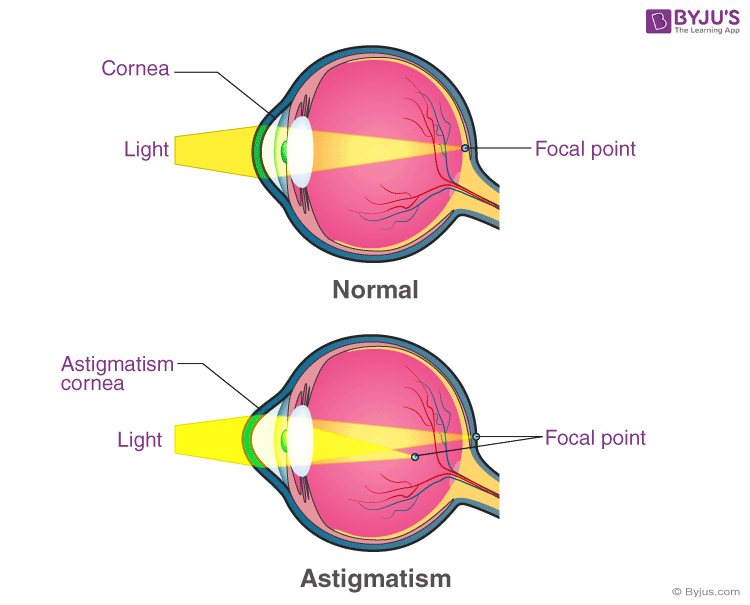Astigmatism is an optical defect that blurs the vision. Before learning what causes this defect, let us understand how the eye perceives light. When light enters a perfectly spherical lens (like a basketball), it refracts or bends evenly. If the lens is not entirely spherical, the light that enters the lens is refracted more in one direction than another.
|
Table of Contents |
What is Astigmatism?
Now, under normal circumstances, when light enters a person’s eye, which is naturally shaped like a sphere, it creates a clear view of the object as the light is refracted evenly. However, what happens if a person’s eye is curved but not wholly spherical, like the back of a spoon? For this person, when light enters the eye, it is refracted more in one direction than the other, allowing only part of the object to be in focus at one time. This is called a refractive error. Objects at any distance can appear blurry and wavy.

This defect in the eye or in a lens caused by a deviation from spherical curvature, which results in distorted images, as light rays are prevented from meeting at a common focus, is called Astigmatism.
|
Related Articles |
Types of Astigmatism
The eye defect is usually caused by an irregularly shaped cornea or distorted lens. When the cornea has an irregular shape, it is called corneal astigmatism. When the shape of the lens is distorted, you have lenticular astigmatism. As a result of either type, your vision for near and far objects appears blurry or distorted. Its almost like looking into a funhouse mirror where you appear too tall, too wide, or too thin.
The steepest and flattest meridians of an eye with astigmatism are called the principal meridians.
It can further be classified as regular and irregular astigmatism. In regular, principal meridians are perpendicular to each other (90-degree separation). Opposite to this, irregular, the principal meridians are not perpendicular to each other.
Most astigmatism is regular corneal, which gives the front surface of the eye an irregularly curvy shape, like that of a spoon. Eye injuries that result in scars on the cornea can cause an irregular defect. Certain eye surgeries or a disease called keratoconus (gradual thinning of the cornea) can also cause a rare defect.
Frequently Asked Questions – FAQs
Define Astigmatism.
What is a refractive error?
What causes Astigmatism?
How many types of Astigmatism are there?
What are principal meridians?

Visit again to learn more about other eye defects and various other concepts like a concave and convex lens, and other interesting topics with the help of interactive video lessons.




Thanks for the info, I have really learnt a lot about fractive errors